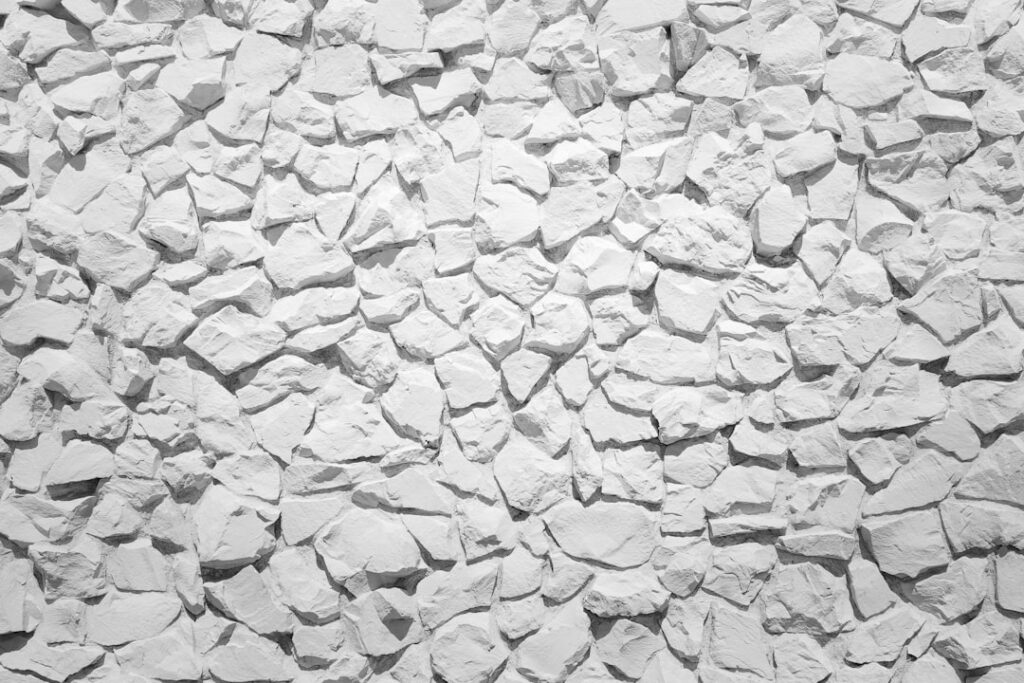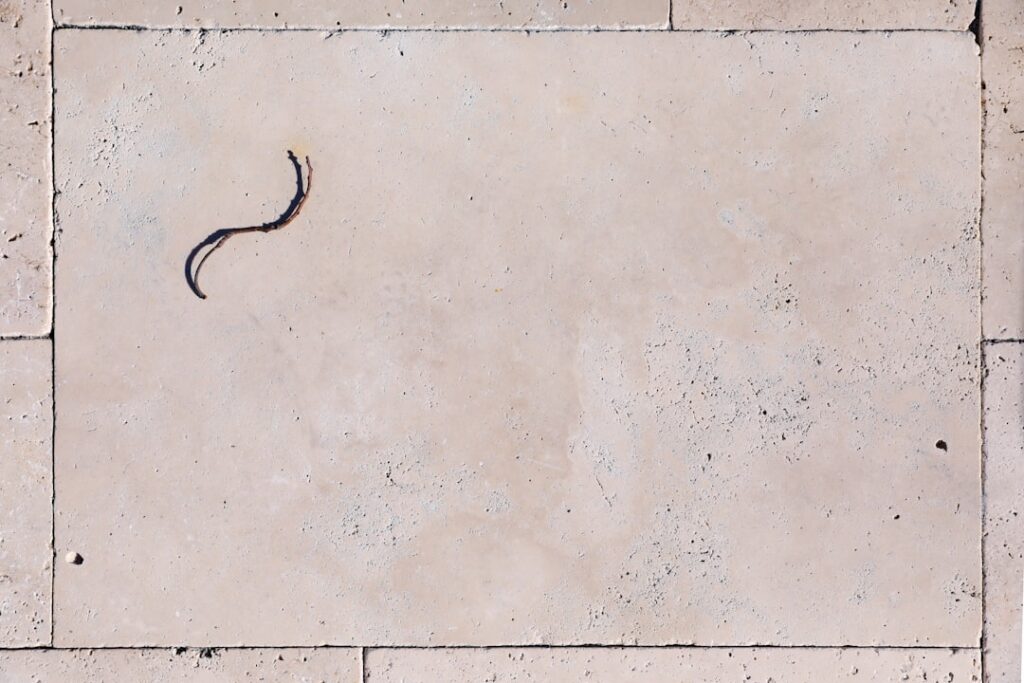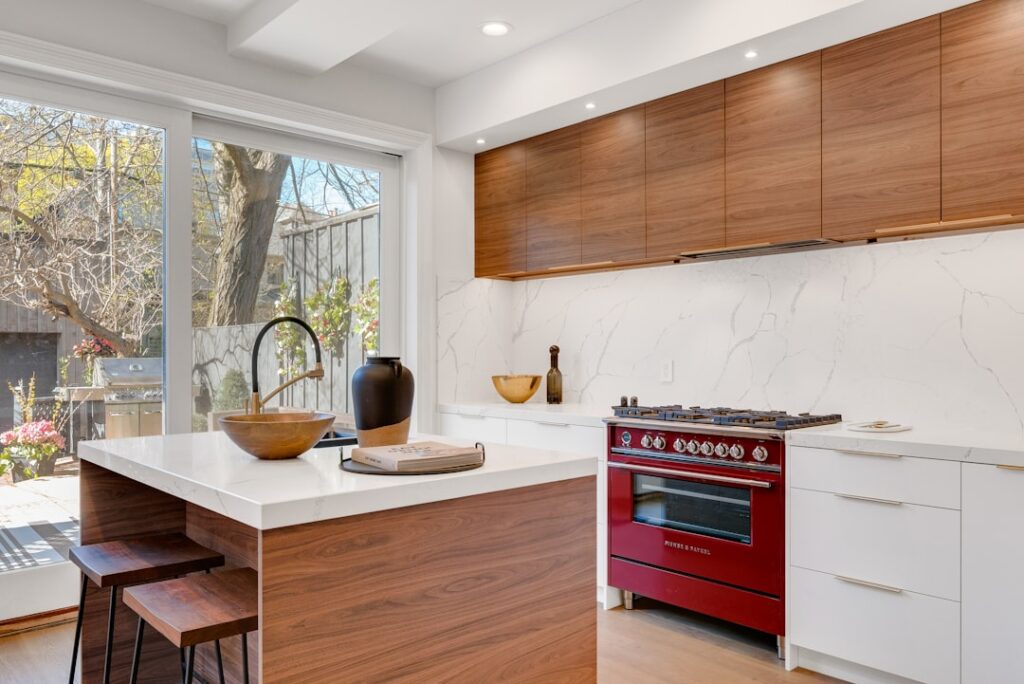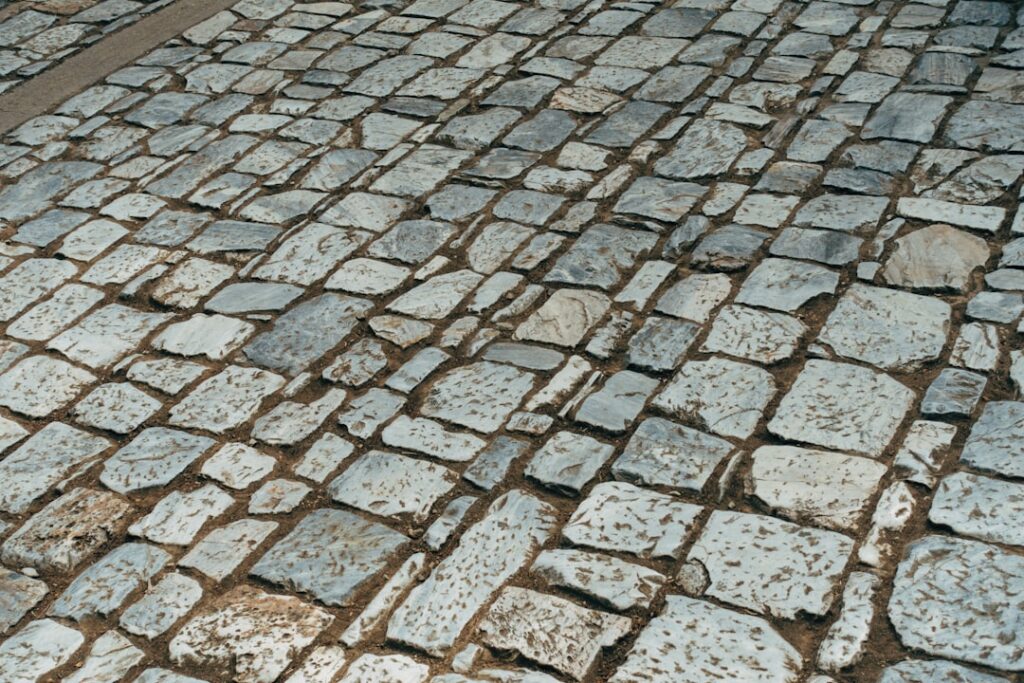Picture this: You’re starting a thrilling new project, and it’s time to choose the right natural stone. Limestone and travertine stand as two strong contenders, but how do you decide which is the ultimate champion for your needs?
In one corner, we have limestone. Known for its rock-solid durability and dense composition, it’s the heavyweight champ of high-traffic zones and tough exterior spaces. Think of it as the reliable hero, always ready to take on the toughest challenges.
On the opposite side, there is travertine. With its porous structure and rugged charm, it brings an earthy, textured elegance to indoor areas. This stone is like a sophisticated artist, adding a touch of rustic beauty wherever it goes.
Both stones come with their own set of pros and cons. Maintenance, aesthetics, and practical use all play a part in deciding which one takes the crown.
So, what’s the verdict? Read on to pick the best choice for your needs!
Formation and Composition

Travertine and limestone might look similar at first glance, but their stories are quite different. Let’s see what makes each one unique.
Limestone, a sedimentary rock, has a marine origin. Imagine an ancient ocean bed filled with coral and mollusc skeletons.
Over millions of years, these ossified fragments got compressed under the ocean’s weight. Such extreme heat and pressure transformed them into limestone, a rock primarily composed of calcium carbonate. Its sturdy nature makes it a popular choice for construction and architectural pieces.
Travertine, however, tells a different tale. It’s formed in freshwater environments like hot springs and caves. The formation is swift, with calcite depositing rapidly. This gives travertine its signature porous and layered appearance. As a result, each and every piece holds a touch of natural artistry that can enhance any space.
Appearance and Texture
When choosing natural stones for your architectural project, the look and feel can make all the difference.
- Limestone is your go-to for smoothness. It has a consistent texture that looks sleek. The colors? Think white to beige. Classic, clean, and timeless. You can hone its surface to get a matte finish, which adds a touch of sophistication. It’s also less porous than travertine. Ideal for places where moisture might be an issue.
- Travertine brings a rustic vibe. Its surface is full of natural pits and grooves, giving it a textured character. You can leave it natural or fill those pits for smoothness. The colour range is stunning – warm beiges, tans, even rusty reds. Honing travertine gives it a soft, velvety finish that keeps its earthy charm but adds elegance.
In the end, both stones offer something special. Do you want limestone’s refined consistency or travertine’s dynamic texture? Either way, you’ll add unique beauty to your space.
Durability and Strength

Evaluating the durability and strength of these stones is important for making an informed decision for your project. Both are sedimentary natural stones, but their durability and strength differ greatly.
- Limestone is generally more durable due to its denser composition. This makes it better suited for high-traffic areas and exterior applications where longevity is essential.
- Travertine, while still a robust natural stone, is slightly less dense. Its porous nature can make it more susceptible to wear and tear, especially if not properly sealed. This doesn’t mean travertine lacks strength; it simply requires a bit more care in high-traffic or outdoor settings.
For those who want to avoid frequent repairs and replacements, limestone offers a compelling advantage. Its superior durability allows you to enjoy a long-lasting, low-maintenance surface.
However, if you’re drawn to the unique, earthy textures of travertine and are willing to invest in its upkeep, this natural stone can still be a strong contender. And if something happens to your precious travertine surfaces, you can trust Stone Protection to bring your stone tiles back to pristine condition!
Maintenance and Care
Taking proper care of limestone and travertine requires understanding their unique properties and needs.
Both stones require diligent sealing and regular maintenance to keep them looking their best over time. Regular sealing acts as a protective barrier against stains and wear. For limestone, a high-quality sealant preserves the stone’s integrity, while travertine’s natural holes need extra attention to prevent debris accumulation.
Here’s a handy comparison:
| Aspect | Limestone | Travertine |
| Sealing Frequency | Every 1-2 years | Every 1-2 years |
| Maintenance Effort | Moderate | High due to natural holes |
| Special Care | Avoid acidic cleaners | Fill holes periodically |
Holes in travertine, if left unattended, can trap dirt and moisture, leading to damage. Limestone, on the other hand, is more uniform but still needs periodic sealing to shield it from spills and stains.
Best Use Cases

Limestone, with its dense and durable nature, excels in both indoor and outdoor applications. You’ll find it ideal for flooring, wall cladding, and even as a striking countertop material.
Its resistance to weathering makes it perfect for patios, driveways, and garden pathways. Indoors, limestone’s subtle elegance enhances kitchens, bathrooms, and living spaces, offering a timeless aesthetic.
Travertine, on the other hand, shines in spaces where a touch of unique charm is desired. Its porous texture and unique patterns make it a popular choice for indoor flooring, especially in areas like bathrooms and kitchens where the natural stone can elevate the ambience.
Travertine’s versatility extends to outdoor use, including pool decks and garden pathways, though it may require more maintenance than limestone due to its porosity.
Your choice should ultimately depend on your specific needs and design vision.

Conclusion
In the ultimate showdown between limestone and travertine, there’s no absolute winner – only the right choice for your unique needs and vision.
If you crave a rock-solid, low-maintenance marvel that can withstand the harshest conditions, limestone stands tall as your trusted ally. Its durability and timeless appeal make it a champion for high-traffic zones and demanding outdoor environments.
However, if your heart is captivated by rustic beauty and distinctive elegance, travertine might just steal the spotlight. While it requires a bit more care, its textured charm and earthy warmth can transform your space into a cozy work of art.
When it comes to aesthetics, maintenance, and practical application, the decision ultimately hinges on what you value most in your project.
Whether you choose the steadfast reliability of limestone or the artistically rugged allure of travertine, you’re investing in a piece of nature’s narrative – one that will stand the test of time and bring unparalleled beauty to your space.
Frequently Asked Questions
Are Limestone and Travertine Eco-Friendly Options?
Limestone and travertine both have a lower environmental impact compared to synthetic materials. Such natural stones are durable, long-lasting, and can be sourced locally, reducing transportation emissions.
However, quarrying still affects ecosystems. If you prioritize sustainability, look for suppliers committed to responsible quarrying practices and consider the overall environmental impact of your project.
How Do Limestone and Travertine Impact Home Resale Value?
Both stones can greatly enhance your home’s appeal. Limestone offers a timeless, elegant look, often attracting buyers seeking classic aesthetics. Travertine, with its unique textures, appeals to those in need of a more rustic charm.
Ultimately, each stone adds distinct character and value, making your home more attractive to potential buyers and, hence, boosting resale potential.
Can Limestone and Travertine Be Used for Outdoor Projects?
Absolutely, you can use both limestone and travertine for outdoor projects. Limestone is durable and weather-resistant, making it ideal for pathways and patios.
Travertine, with its natural beauty and non-slip surface, is perfect for pool decks and garden walkways. Each stone brings a unique aesthetic and functionality, so choose based on your specific needs and the look you’re aiming for in your outdoor space.
What Are the Cost Differences Between Limestone and Travertine?
When considering cost differences, you’ll find that travertine generally costs more than limestone. Travertine’s unique patterns and colours often command a higher price. However, limestone still offers a beautiful, natural look.
Both stones have their own charm, but your budget will likely play a significant role in your decision.
Do Limestone and Travertine Retain Heat or Stay Cool?
Limestone and travertine each have their own thermal properties. Limestone tends to stay cooler underfoot, making it ideal for hot climates.
Travertine, on the other hand, retains heat better, providing a warmer surface on cooler days. It’s all about what suits your lifestyle and environment.
Choose limestone if you prefer a cool touch, or go for travertine if you want to keep the warmth.





